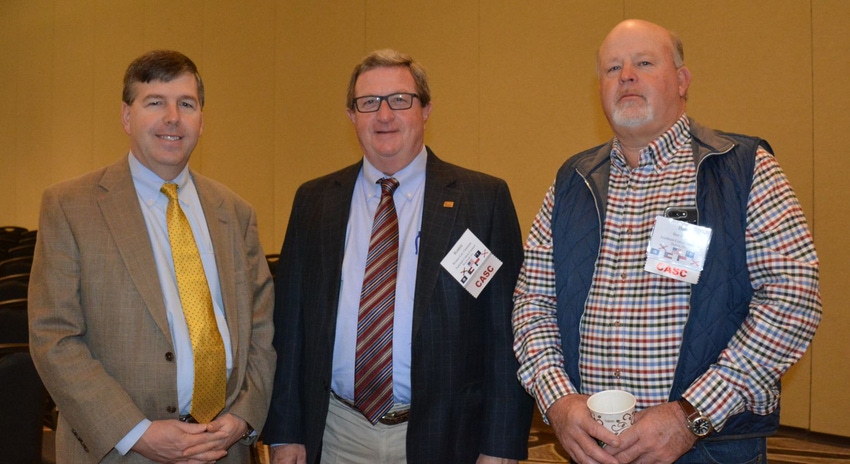
The top priority of the National Cotton Council for the 2018 farm bill is to get cotton back into Title 1 and in the ARC (Agriculture Risk Coverage) and PLC (Price Loss Coverage) programs and to do that for seed cotton.
“That would be the covered commodity that is eligible based on the combined or weighted average of both cotton seed and lint,” explained Reece Langley, the council’s vice president for Washington operation in a January address to the Southern Cotton Growers and Southeastern Cotton Ginners Association annual meeting in Myrtle Beach, S.C.
“We know that we have to be back in Title I so we have effective price and revenue protection on cotton,” Langley stressed. “We have seen what happened the last four years where we have not had that type of safety net and given where prices have been relative to cost of production, we have to address that.”
In his comments to ginners and producers, Langley outlined the council’s recommendations for the new farm bill and highlighted challenges the bill faces to reach final passage this year.
In addition to having cotton once in Title I of the farm bill, Langley said the council wants to have payment yield updates that other commodities enjoy that would allow growers to update their payment yields for ARC and PLC program. This was not part of the 2014 farm bill for cotton.
The council is recommending that for any farms with cotton base that is enrolled in ARC and PLC, farmers would not be eligible to purchase STAX (Stacked Income Protection Plan) that year.
“If there is a year where cotton prices move up and you believe STAX might be a more effective safety net for that year because of the high prices, we would like to see it structured that for that year that you wouldn’t enroll in ARC or PLC. You could purchase STAX if you chose to do so,” Langley said.
Still, the farm bill faces many challenges in the year ahead. Langley said action isn’t expected in Congress until the supplemental disaster relief package is passed. However, Langley noted that both the House Agriculture Committee and Senate Agriculture want an ambitious timeline for passage.
Langley said House Agriculture Committee Chairman Mike Conaway (R-Texas) and Ranking Member Collin Peterson (D-Minn.) would like to have the farm bill out of the committee and across the House floor by the end of March. The staff of the Senate Agriculture Committee has said the committee is prepared to move after short-term relief for both dairy and cotton is addressed in the disaster relief package, according to Langley.
“In the Senate, getting floor time to bring up the farm bill is going to be very challenging,” Langley said. “They still have a number of nominations to approve in the Senate and that floor time is very valuable. That could delay action in the Senate.”
And with the mid-term Congressional elections coming up in November, a farm bill extension for 2019 is a possibility if significant progress isn’t made on the bill by the August Congressional recess.
Moreover, a top challenge of the 2018 farm bill will be the budget.
“There’s not going to be any new money for this farm bill. We will be doing well just to hold the existing funding that is available today but hopefully carving that up in a different fashion to address some of the needs that are out there,” Langley said.
“Another challenge is finding those necessary funds to address the shortcoming in the safety net for both cotton and dairy. Those are the two that have risen to the top and have to be addressed in this new farm bill. Most of the other commodities will be status quo with maybe some tweaking around the edges,” he said.
Also in the House, Langley expects an effort to come up again, as it did in the 2014 farm bill, to split the nutrition programs from the rest of the farm bill. That occurred in 2014, but ultimately both programs were brought back together in the final farm bill.
“That’s what it takes to get a farm bill. You have to have those two components to bring together both the urban and rural members to pass a farm bill through the House and the Senate,” Langley said.
And for cotton in particular in the farm bill, there is the legacy from the Brazil World Trade Organization case that forced cotton out of Title 1 in the 2014 farm bill. Langley said some members of Congress are raising concerns that the council is addressing.
“They are saying, ‘we had to make those changes in 2014 to comply with that trade case. Why are you telling me now we can go back and do something different? Isn’t that Brazil case, or settlement, still binding for what we can do for cotton policy?’” Langley said.
About the Author(s)
You May Also Like






